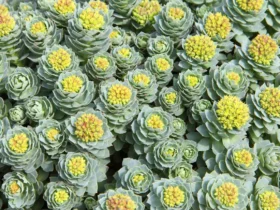In the meadows and gardens of many regions, a familiar and charming flower graces the landscape—the Bellis perennis, commonly known as the Common Daisy. With its delicate white petals and cheerful yellow center, this unassuming flower holds a special place in the hearts of gardeners, nature enthusiasts, and even in cultural symbolism. In this article, we delve into the captivating world of Bellis perennis, exploring its appearance, cultural significance, and the joy it brings as a symbol of simplicity and natural beauty.
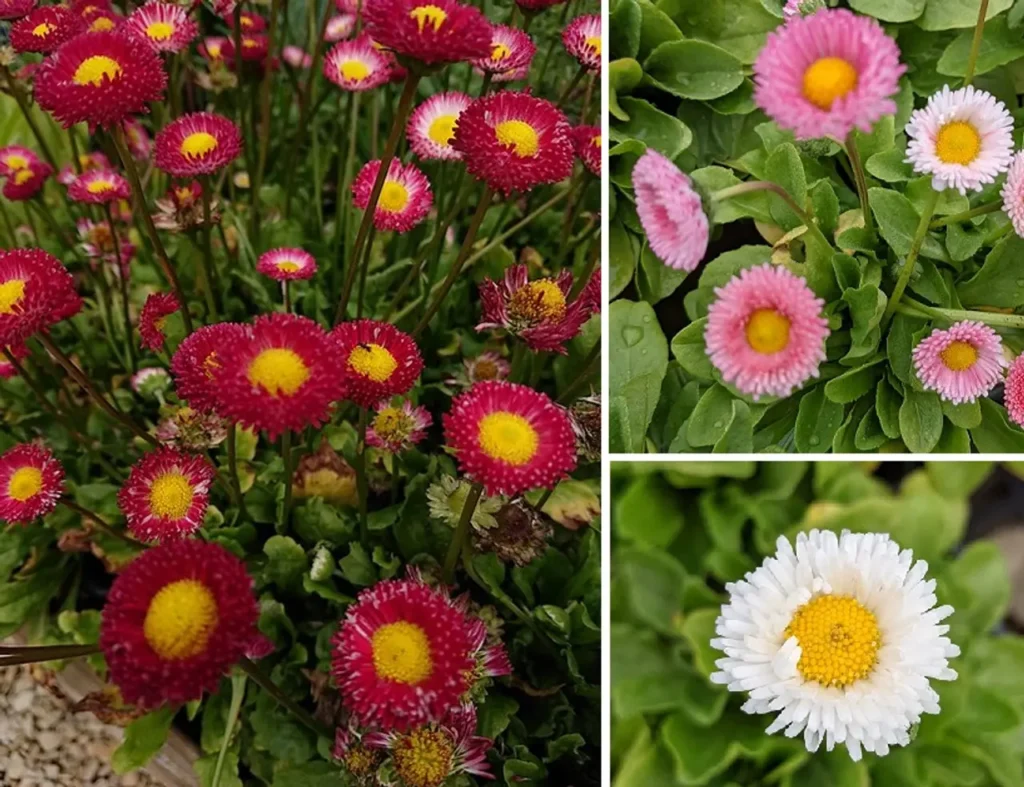
Appearance and Characteristics
Bellis perennis, a member of the Asteraceae family, is characterized by its small and dainty flowers. The blossoms feature white petals that surround a sunny yellow center, creating a visual harmony reminiscent of the sun’s rays. The plant’s leaves are often spoon-shaped and form basal rosettes, adding an extra layer of visual interest.
The compact size of the Common Daisy makes it a versatile choice for gardens, window boxes, and even lawns, where its blooms create a carpet of delicate beauty.
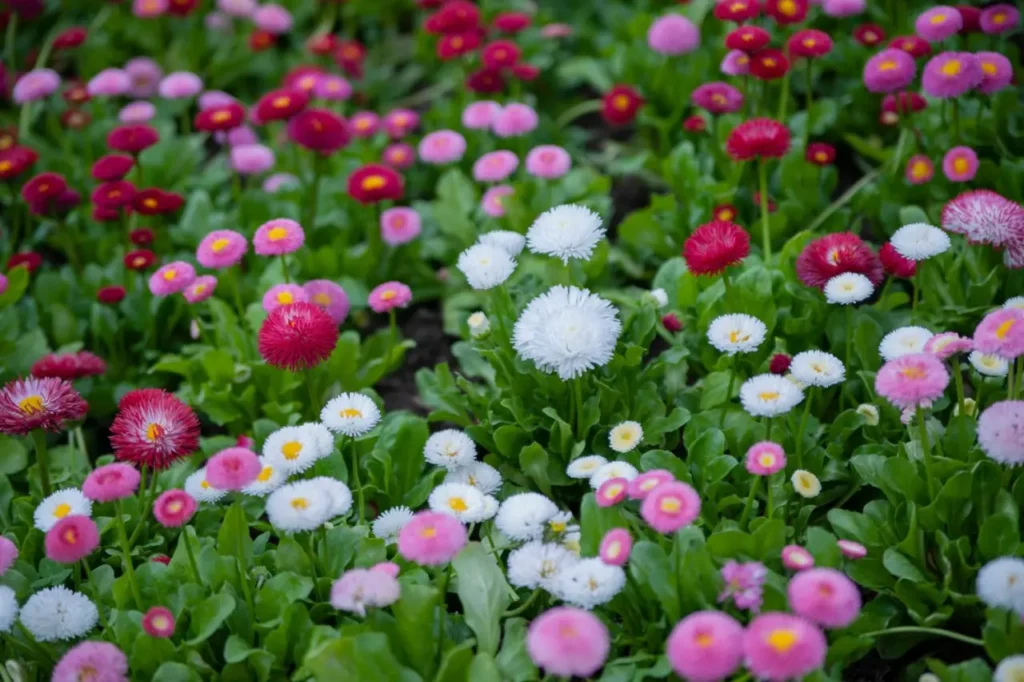
The color of the Bellis perennis
Bellis perennis, commonly known as the common daisy or English daisy, is a small flowering plant that produces charming, daisy-like flowers. The flowers of Bellis perennis come in a range of colors, although the most common and classic color is white with a yellow center. However, cultivated varieties and hybrids have expanded the color palette of Bellis perennis flowers to include:
- Pink: Many cultivated varieties of Bellis perennis feature soft pink petals.
- Red: Some varieties produce daisies with shades of red, ranging from pale pinkish-red to deeper crimson.
- Purple: Purple-flowered Bellis perennis varieties add a touch of unique color to gardens.
- Rose: A color that’s often a deeper and richer shade of pink.
- Bi-color: There are also cultivars with bi-colored flowers, such as white petals with a pink or red center.
- Salmon: A shade that falls between pink and orange, creating a warm and inviting appearance.
- Lavender: A soft and soothing color that adds a touch of elegance to the flower.
- Yellow: While less common, there are varieties with yellow petals instead of white.
- White with Yellow Center: The traditional and most recognizable color combination, featuring white petals and a bright yellow central disk.
These various colors and color combinations have been achieved through selective breeding and hybridization. Bellis perennis is a popular plant for gardens, borders, and containers due to its dainty and cheerful flowers. The exact color of the Bellis perennis flowers you encounter will depend on the specific variety you’re growing or observing.
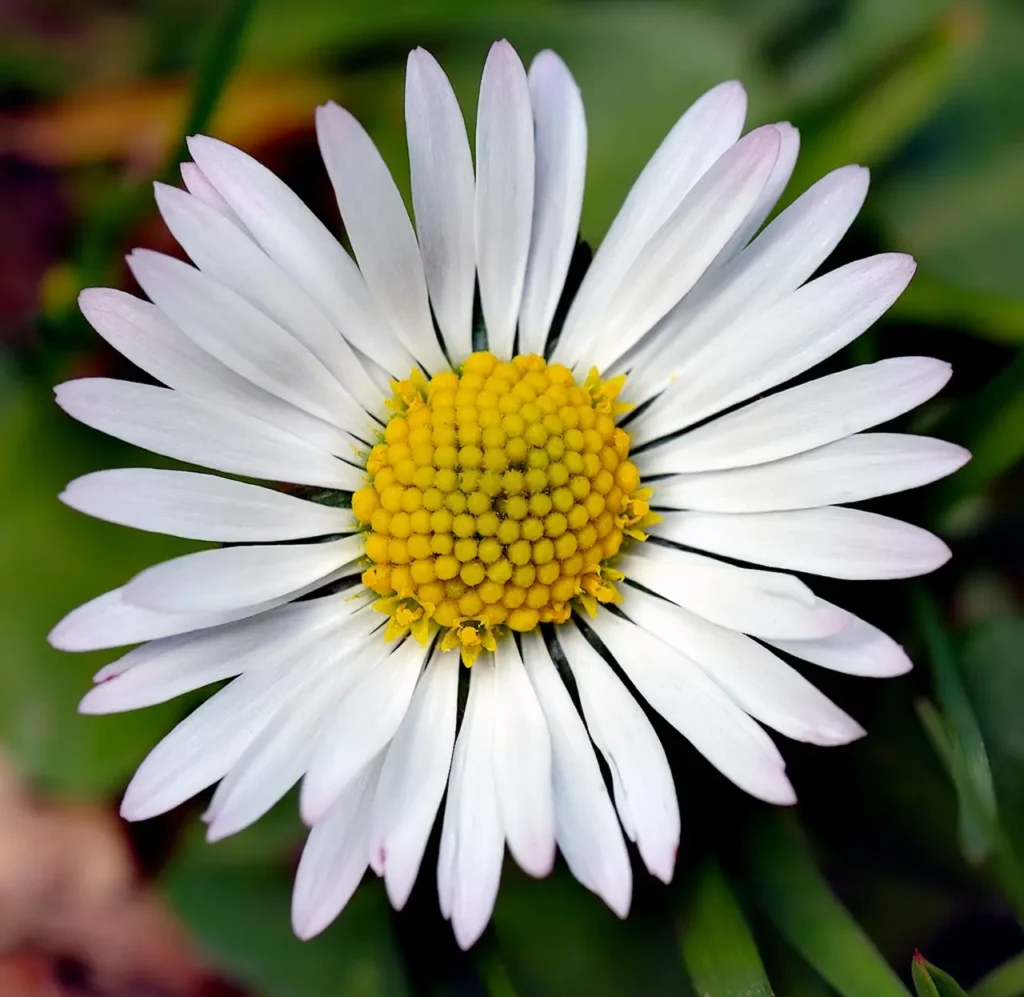
Cultural Significance and Symbolism
The Common Daisy’s unpretentious and pure appearance has earned it a place in cultural symbolism. In the language of flowers, the Daisy is often associated with innocence, purity, and loyal love. Its name is derived from the Old English term “daes eage,” meaning “day’s eye,” which refers to the flower’s habit of opening its petals during the day and closing them at night.
In folklore, Daisies were believed to have magical properties. They were thought to possess the ability to predict the future, as young maidens would pluck the petals while reciting “He loves me, he loves me not” to determine the affections of their suitors.
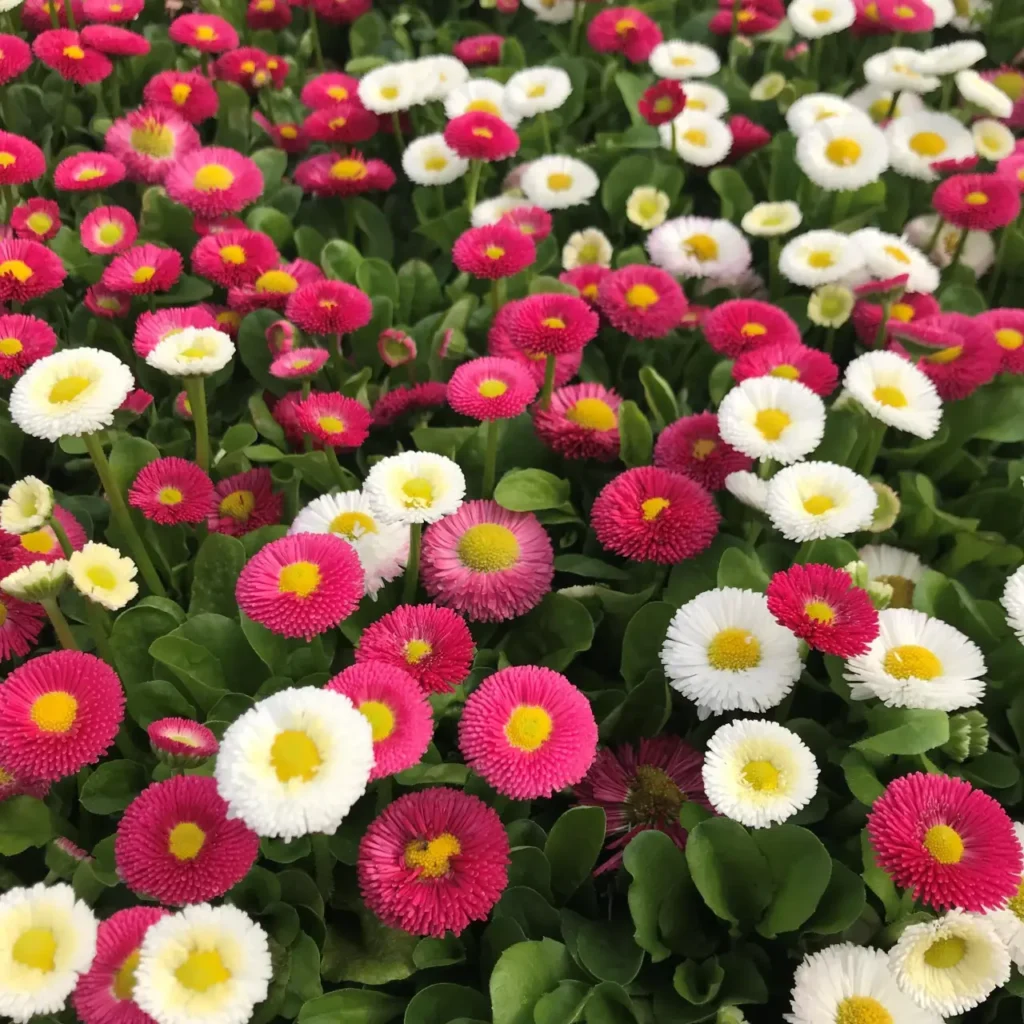
Garden Cultivation and Delight
Bellis perennis is a popular choice for gardeners due to its low-maintenance nature and delicate beauty. It is often used in rock gardens, borders, and as a ground cover. The flower’s ability to withstand cooler temperatures makes it an early-blooming option, adding touches of white and yellow to landscapes that are just awakening from winter’s slumber.
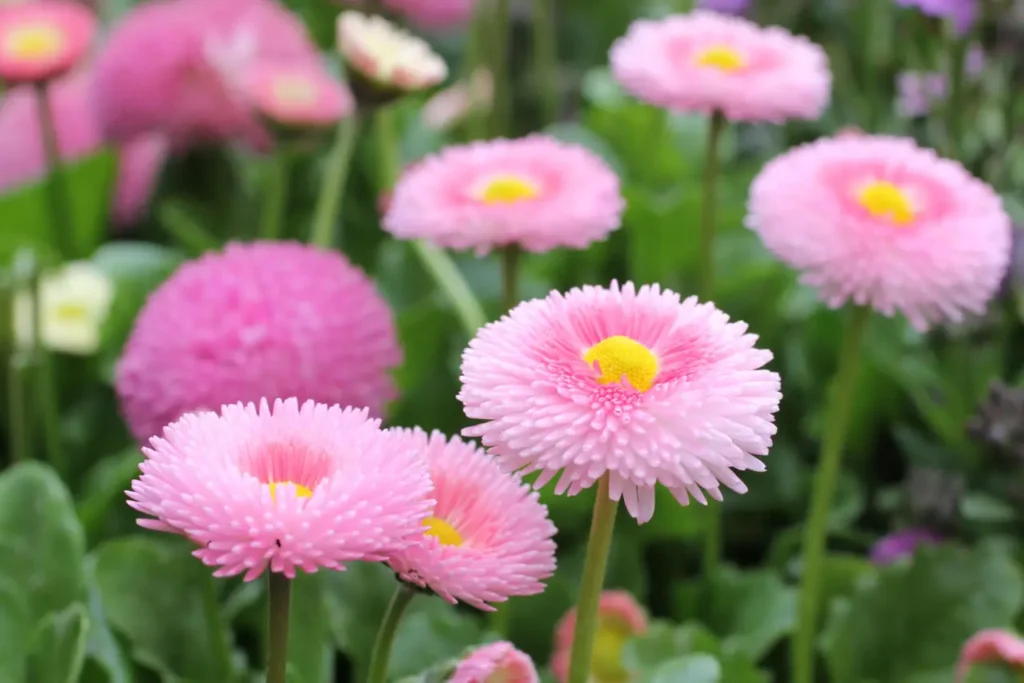
Caring for Common Daisies
Cultivating and caring for Bellis perennis is relatively straightforward. Here are some general care guidelines:
- Light: Plant in full sun to light shade for optimal flowering.
- Soil: Provide well-draining soil that is moderately fertile.
- Watering: Keep the soil consistently moist but not waterlogged.
- Deadheading: Regularly remove spent flowers to encourage continuous blooming.
- Propagation: Daisies can be propagated through division or by sowing seeds.
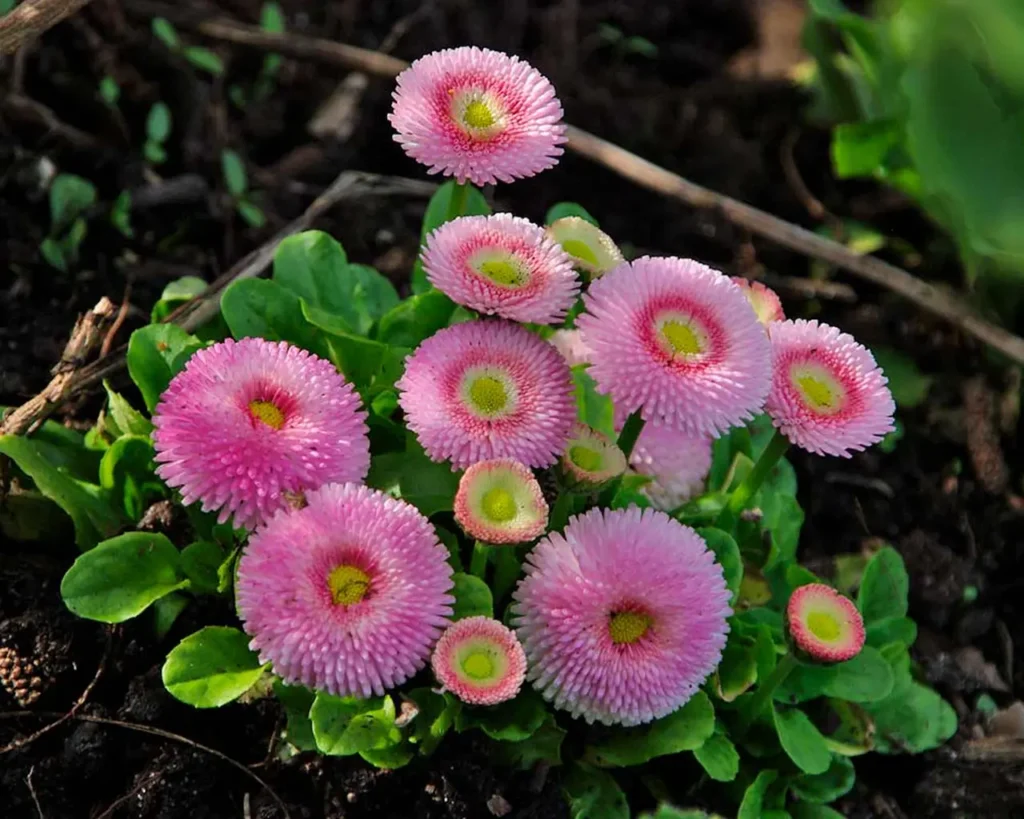
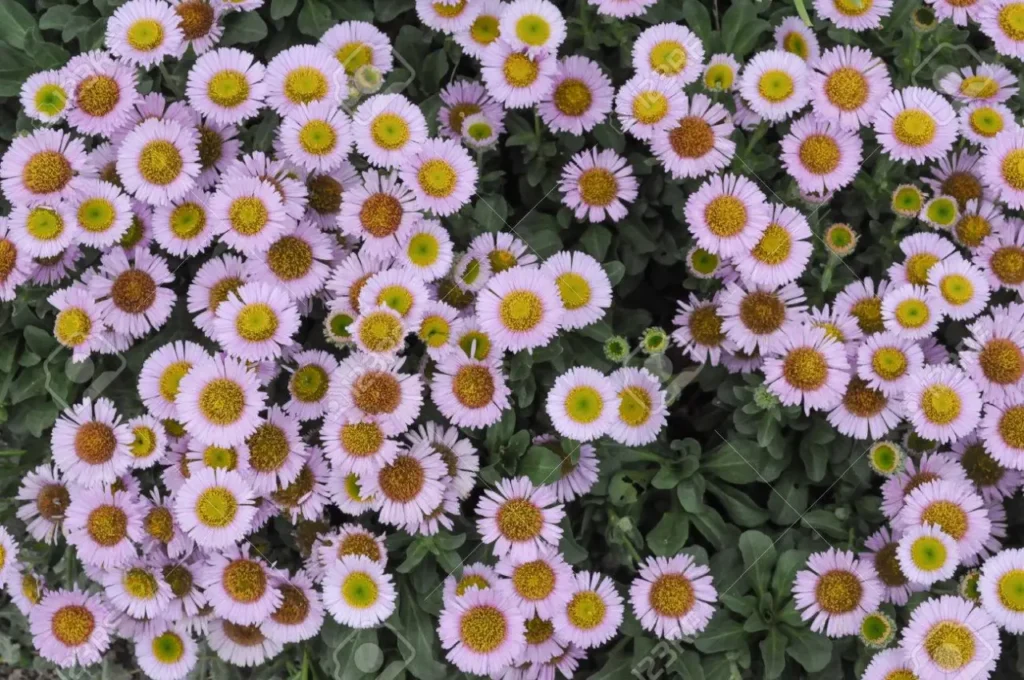
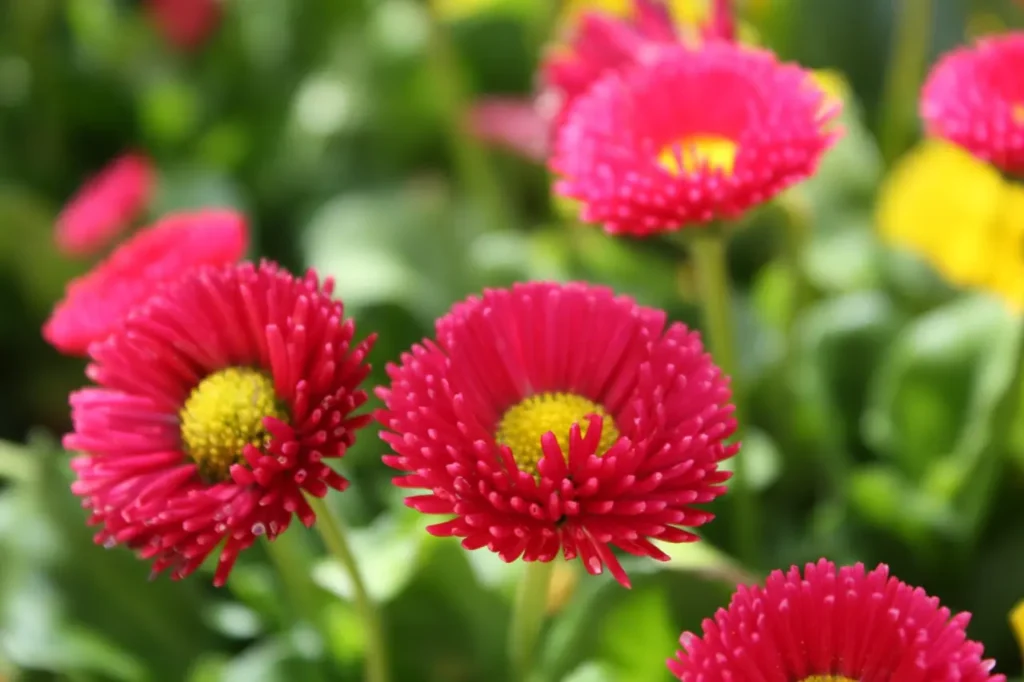
Bellis perennis, the Common Daisy, is a humble yet endearing flower that has charmed its way into gardens and cultures around the world. Its delicate petals, sunny center, and cultural symbolism remind us of the beauty and simplicity that nature offers. By cultivating and appreciating the Common Daisy, we connect with the age-old traditions of flower symbolism and celebrate the enduring charm of a bloom that has been loved for generations.
